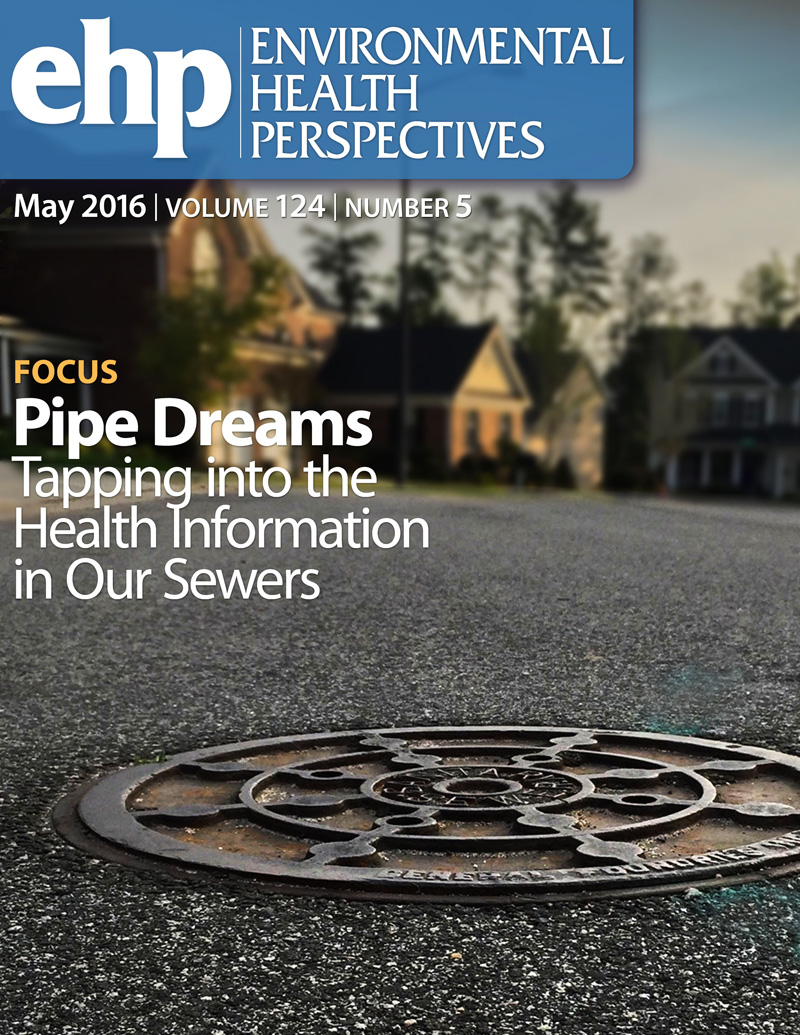长期暴露于空气污染与2型糖尿病发病率的护士健康研究及护士健康研究II
IF 9.8
1区 环境科学与生态学
Q1 ENVIRONMENTAL SCIENCES
引用次数: 0
摘要
研究已经发现了空气污染暴露与2型糖尿病(T2DM)之间的关联,但需要大型队列研究的结果来确定最具影响力的污染物、易感亚群和低水平暴露的关联。我们的目的是在护士健康研究(NHS)和护士健康研究II (NHSII)队列中前瞻性评估长期暴露于细颗粒物(PM2.5)和二氧化氮(NO2)与T2DM发病率之间的关系。方法利用时空模型预测PM2.5和NO2的月暴露量,并将其与参与者的居住地址联系起来。我们使用Cox比例风险模型来评估1992-2019年24个月移动平均PM2.5和二氧化氮暴露与自我报告的临床医生诊断的T2DM之间的关系。我们调整了随时间变化的生活方式因素、生殖激素因素以及个人和社区社会经济地位(SES)。对结果进行meta分析。我们评估了在低于当前美国环保署国家环境空气质量标准(NAAQS)的水平下,这种关系是否持续存在。最后,我们研究了身体质量指数(BMI)、吸烟状况、身体活动、社区社会经济地位和地区的乘法和加法相互作用。结果通过随访,在NHS和NHSII的208,733名女性中,有19,083例T2DM病例。在完全调整的单一污染物模型中,对于T2DM事件,24个月平均PM2.5暴露在四分位数范围(IQR=4.9µg/m3)较高的HR为1.05 (95% CI: 1.02, 1.08)。IQR (7.3 ppb)较高NO2暴露的HR为1.05 (95% CI: 1.01, 1.09)。两种关联对共调整均具有显著性。与完整数据集相比,当限制PM2.5水平低于NAAQS时,关联保持稳定。在BMI≥30、身体活跃、居住在东北部的个体中观察到更强的相关性。结论:研究结果显示,T2DM与长期暴露于PM2.5和NO2之间存在正相关,即使在低于现行EPA NAAQS的水平下也会持续存在。https://doi.org/10.1289/EHP15673。本文章由计算机程序翻译,如有差异,请以英文原文为准。
Long-term Exposure to Air Pollution and Incidence of Type 2 Diabetes in the Nurses' Health Study and Nurses' Health Study II.
BACKGROUND
Research has detected associations between air pollution exposure and type 2 diabetes (T2DM), but findings from large cohort studies are needed to ascertain the most influential pollutants, susceptible subpopulations, and low-level exposure associations. Our aim was to prospectively evaluate the association between long-term exposure to fine particulate matter (PM2.5) and nitrogen dioxide (NO2) and T2DM incidence in the Nurses' Health Study (NHS) and Nurses' Health Study II (NHSII) cohorts of U.S. women.
METHODS
Monthly PM2.5 and NO2 exposures were predicted from spatiotemporal models and linked to participants' residential addresses. We used Cox proportional hazards models to assess the association between 24-month moving average PM2.5 and NO2 exposure and self-reported, clinician diagnosed T2DM from 1992-2019. We adjusted for time-varying lifestyle factors, reproductive hormonal factors, and individual and neighborhood socioeconomic status (SES). Results were meta-analyzed. We evaluated whether relationships persisted at levels below the current U.S. EPA National Ambient Air Quality Standards (NAAQS). Lastly, we examined multiplicative and additive interactions by body mass index (BMI), smoking status, physical activity, neighborhood SES, and region.
RESULTS
Over follow-up, there were 19,083 incident T2DM cases among the 208,733 women in NHS and NHSII. In fully-adjusted single pollutant models, the HR for an interquartile range (IQR=4.9 µg/m3) higher 24-month average PM2.5 exposure was 1.05 (95% CI: 1.02, 1.08) for incident T2DM. The HR for an IQR (7.3 ppb) higher NO2 exposure was 1.05 (95% CI: 1.01, 1.09). Both associations were robust to co-adjustment. Associations remained stable when restricting to PM2.5 levels below the NAAQS as compared to the full dataset. Stronger associations were observed in individuals who had a BMI ≥30, were physically active, and resided in the Northeast.
CONCLUSIONS
Our results showed a positive association between T2DM and long-term exposure to PM2.5 and NO2, persisting even at levels below the current EPA NAAQS. https://doi.org/10.1289/EHP15673.
求助全文
通过发布文献求助,成功后即可免费获取论文全文。
去求助
来源期刊

Environmental Health Perspectives
环境科学-公共卫生、环境卫生与职业卫生
CiteScore
14.40
自引率
2.90%
发文量
388
审稿时长
6 months
期刊介绍:
Environmental Health Perspectives (EHP) is a monthly peer-reviewed journal supported by the National Institute of Environmental Health Sciences, part of the National Institutes of Health under the U.S. Department of Health and Human Services. Its mission is to facilitate discussions on the connections between the environment and human health by publishing top-notch research and news. EHP ranks third in Public, Environmental, and Occupational Health, fourth in Toxicology, and fifth in Environmental Sciences.
 求助内容:
求助内容: 应助结果提醒方式:
应助结果提醒方式:


